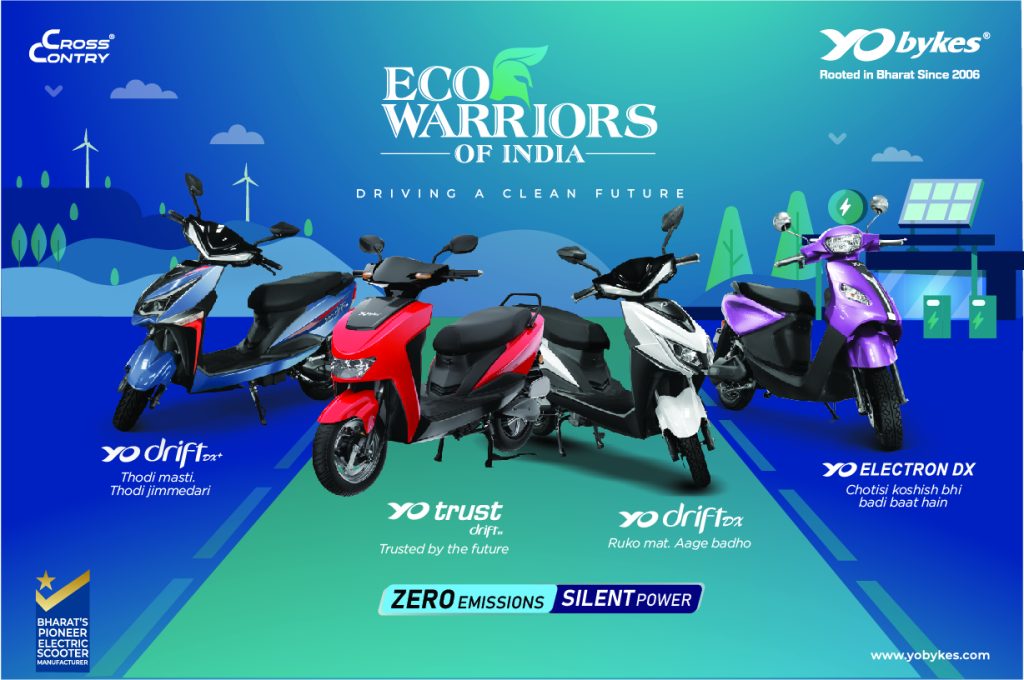Towards an ambitious target Electric two-wheelers in India

Decoding India's Electric Two-Wheeler Revolution: Aiming for an 80% Market Share by 2030
An 80% market share of EV2W by 2030?
https://www.statista.com/statistics/1415459/india-electric-vehicle-market-share/#:~:text=In%202030%2C%20it%20was%20estimated,times%20in%20comparison%20with%202022.
The 80% figure has come from this link:
https://www.investindia.gov.in/team-india-blogs/governments-ev-policies-driving-indias-green-revolution.I have copy pasted the exact section below.
https://www.statista.com/statistics/1415459/india-electric-vehicle-market-share/#:~:text=In%202030%2C%20it%20was%20estimated,times%20in%20comparison%20with%202022.
The 80% figure has come from this link:
https://www.investindia.gov.in/team-india-blogs/governments-ev-policies-driving-indias-green-revolution.I have copy pasted the exact section below.
Policy Interventions
The adoption of EVs will not only positively impact the country’s economy but also help in achieving India’s target of net zero emissions by 2070. To facilitate smooth growth in the sector and achieve the ambitious target of having EV sales penetration of 30% of private cars, 70% of commercial cars, 40% of buses and 80% of two and three-wheelers by 2030,v the government is taking several steps:
Government Initiatives Driving the EV2W Momentum
- The Government of India has announced an ambitious transition target for two-wheelers. It is aiming for an 80% market share for EV2Ws by 2030. This bold goal rides on the push towards pollution-free transport. So, is it achievable? (https://www.investindia.gov.in/team-india-blogs/governments-ev-policies-driving-indias-green-revolution) Let us understand how and where India has reached on this road and how far it needs to go.
- Yobykes introduced India’s first electric scooter in 2006. This was a nascent phase of EV2Ws with vehicles powered on lead-acid batteries. These batteries had a remarkable ability to provide high power surge to motor vehicles with starter motors. But they had certain disadvantages as well. Quick draining of these batteries was a serious limitation. Lead-acid batteries also took a very long time to charge. Despite these limitations, the world had begun to see the merit in electric vehicles, and it was only a matter of time when government policy would see the merit in aligning itself with a strong electric vehicle (EV) infrastructure.
FAME takes the stride
- For India, this moment came in 2015 when the Government announced the FAME India Scheme. FAME, i.e., Faster Adoption and Manufacturing of (Hybrid &) Electrical Vehicles in India, was launched to reduce dependency on fossil fuels and address the issue of vehicular emissions. The first phase of FAME had four focus areas: technological development, demand generation, pilot project, and charging infrastructure components. It had an outlay of Rs. 895 crores. In this phase, about 2.8 lakh xEVs were supported. Money was invested into charging infrastructure and technology development projects. Government allotted funds for testing Infrastructure and setting up of ‘Centre of Excellence’ for advanced research in electrified transportation, battery engineering, etc., in various organisations/ institutions like the Automotive Research Association of India (ARAI), IIT Madras, IIT Kanpur, Non-Ferrous Material Technology Development Centre (NFTDC), Aligarh Muslim University (AMU), etc. This phase marked a serious beginning in India’s EV transition.
(https://static.pib.gov.in/WriteReadData/specificdocs/documents/2022/jul/doc202271169601.pdf) (https://sansad.in/getFile/loksabhaquestions/annex/1714/AU2717.pdf?source=pqals) - Fame II was launched in 2019 with an outlay of Rs. 10,000 crores. It was remodeled in 2021 after feedback from industry and users. Repeated changes and disagreements regarding localisation norms have affected the functioning of FAME II. This, however, has not stopped the green commuting solutions from growing.
- Other government policies played an equally important role in propelling the EV industry. For instance, PLI, i.e., the Production Linked Incentive Scheme for the Automotive sector was launched in 2021, with a budgetary outlay of Rs. 25,938 Cr. to boost domestic manufacturing of advanced automotive technology to attract investments into the automotive manufacturing value chain. This scheme attracted a proposed investment of Rs. 74,850 Cr. against the target of 42,500 Cr. (https://www.investindia.gov.in/team-india-blogs/governments-ev-policies-driving-indias-green-revolution)
Growth in electric scooters
- Benefitting from the aggressive EV policy of the Government of India, the EV2W segment has seen good success. Increasing awareness, manufacturing incentives, custom duty exemptions for capital goods and machinery needed to manufacture lithium-ion cells for batteries, road tax waiver, incentives for setting up charging stations, etc., have all done their job to result in phenomenal growth in sustainable urban and rural mobility through the electric scooters segment. (https://www.downtoearth.org.in/news/energy/budget-2023-24-customs-duty-waived-for-machinery-required-to-manufacture-lithium-ion-cells-for-batteries-87463)
(https://e-amrit.niti.gov.in/electric-vehicle-incentives)
What changed the consumer mind-set for electric scooters?
- A lot has changed in electric scooters since 2006, and especially since 2015. There is a vast difference between the electric scooter of 2006 and the electric scooter of 2024. The first critical change is the battery. The lithium-ion battery revolutionised the EV scene, especially the EV2W scene. This battery is lighter, safer, and energy-efficient, has high energy density, needs a relatively shorter charging time, and has a much better range (distance covered per charge). It has a longer life.
- The second significant change is the electrification of India. A few decades ago, we lived in India with chronic power failures or no power supply to several rural regions. Today, the power supply infrastructure is the single biggest success factor in the growth of EV2Ws all over the country.
- Thirdly, today’s electric scooters have acquired several advanced features. They have lighter bodies, better ground clearance, tubeless tires, better suspension, torque, and payloads. Manufacturing incentives have provided the resources to modernise EV two-wheelers in several ways. EV2Ws now have the latest technological features, ranging from keyless start to reverse gear, remote lock and theft alarms to GPS navigation, smartphone integration, and remote diagnostics. This has multiplied the benefits of an EV two-wheeler ride.
- The fourth important factor is the price. There has been a drop in lithium-ion battery price due to localised production. Despite the reduction in subsidies, an EV2W starts on an average of a little over Rs. 50,000 in India, definitely an affordable price for tier I, II, and III cities/towns and, to an extent even for rural India. A basic petrol two-wheeler also starts upward of Rs. 58,000. Though there is purchase price parity in the basic models of petrol and electric 2Ws, in the long run, the maintenance cost of EV2Ws is nothing compared to petrol two-wheelers.
https://timesofindia.indiatimes.com/auto/bikes/top-5-most-affordable-petrol-scooters-in-india-tvs-scooty-pep-to-hero-maestro-edge-110/articleshow/90201387.cms - The fifth vital factor is eliminating license and helmet requirements in low-speed electric two-wheelers. Anyone above the age of sixteen can drive these vehicles without a license, while it is essential to get a license to drive a petrol two-wheeler. (According to the Motor Vehicles Act of 1988, an electric scooter with a power output of less than 250 watts does not require a license.)
Current market trends in electric scooter sales
- There is continuous growth in electric two-wheeler registrations in India. According to VAHAN, Government’s transportation data portal, electric two-wheeler (EV2W) sales in the country jumped 36.07 percent to 8,59,269 units in 2023, which is higher than 6,31,476 units in 2022. (https://www.moneycontrol.com/news/business/indias-e2w-sales-cross-8-lakh-mark-in-2023-as-adoption-rates-go-up-11989961.html)
- Major players in the electric-two-wheeler markets include Hero Electric, Okinawa Autotech, Greaves Electric Mobility Pvt. Ltd., Ather Energy Pvt. Ltd., PuREnergy Pvt. Ltd., Ola Electric Pvt. Ltd., TVS Motor Company and Revolt Intellicorp Pvt. Ltd. among others.
- Yobykes electric scooters is the pioneer in EV2Ws in India. It introduced India’s first two-wheeler in the year 2006. It has now launched four EV2W models. Looking at the high demand for moderately priced EV2Ws, Yobykes has struck a fine balance between affordable pricing and rich features.
Technological Innovations Shaping the Future of Electric Scooters
Future trends for electric scooters
- Everything must fall in place for any idea to flower and prosper. EV2W is in that fortunate space. Roads, connectivity, electrical Infrastructure, government support, technological advances, and consumer interest are all in place. And the results are evident in the fast-rising sales figures. This trend looks poised to continue.
- Government policies have encouraged local lithium battery manufacturing to keep up with the massive demand. This is showing results in cost reduction. Exploring alternatives to lithium is also on the agenda. Solid state sodium-ion batteries are showing great promise. Sodium ions will replace lithium ions in these batteries. Sodium is available in abundance in nature. Hence, sodium-ion batteries will become game-changers in this industry.
- Another area where one will see a sea change is in charging. Future trends suggest not just public charging infrastructure but also facilities for wireless charging. Wireless charging will do away with plugs and enable parked scooters to get charged through coils in the parking lots.
- On the front of material improvements, the industry is making significant strides. Lightweight materials like aluminum, magnesium, and carbon fiber are on the horizon. Material advances are poised to improve the performance of EV2Ws in terms of stability and longevity.
- The market buoyancy, rapidly evolving technology advancements and consumer interest are suggesting a very interesting growth in the near future.
Market share of EV2W by 2030?
- Looking at the rapid strides and great momentum of advancements in EVs in general and electric scooters in particular, there is no doubt that growth will be rapid. According to Statista, it is estimated that, in an accelerated scenario, electric vehicles will have a market share of 40 percent by 2030. (https://www.statista.com/statistics/1415459/india-electric-vehicle-market-share/#:~:text=In%202030%2C%20it%20was%20estimated,times%20in%20comparison%20with%202022.)
Whether estimates and reality will change in near future to match with the Government of India’s ambitious aim is something time will tell.
Related Blogs
Yeni Baslayanlara Başarıbet Sürprizi: Bol Kazançli Bonuslar
Ister ticaret hayatina yeni giris yapan bir isletme ister alaninda...
Read MoreSweet Bonanza Casinodan Türkiyeye Özel Kazançlý Bonuslar
Dünya genelinde kendi sektörünün lideri olan bir iþletme yeni bir...
Read MoreAviator Casinodan Türkiyeye Özel Teklifler
Yaptýðý hamlelerle dünya genelinde kendi sektörünün lideri olan bir firma...
Read MorePicking a casino site with a good reputation in Australian
During the last decade, online casino play in the land...
Read More